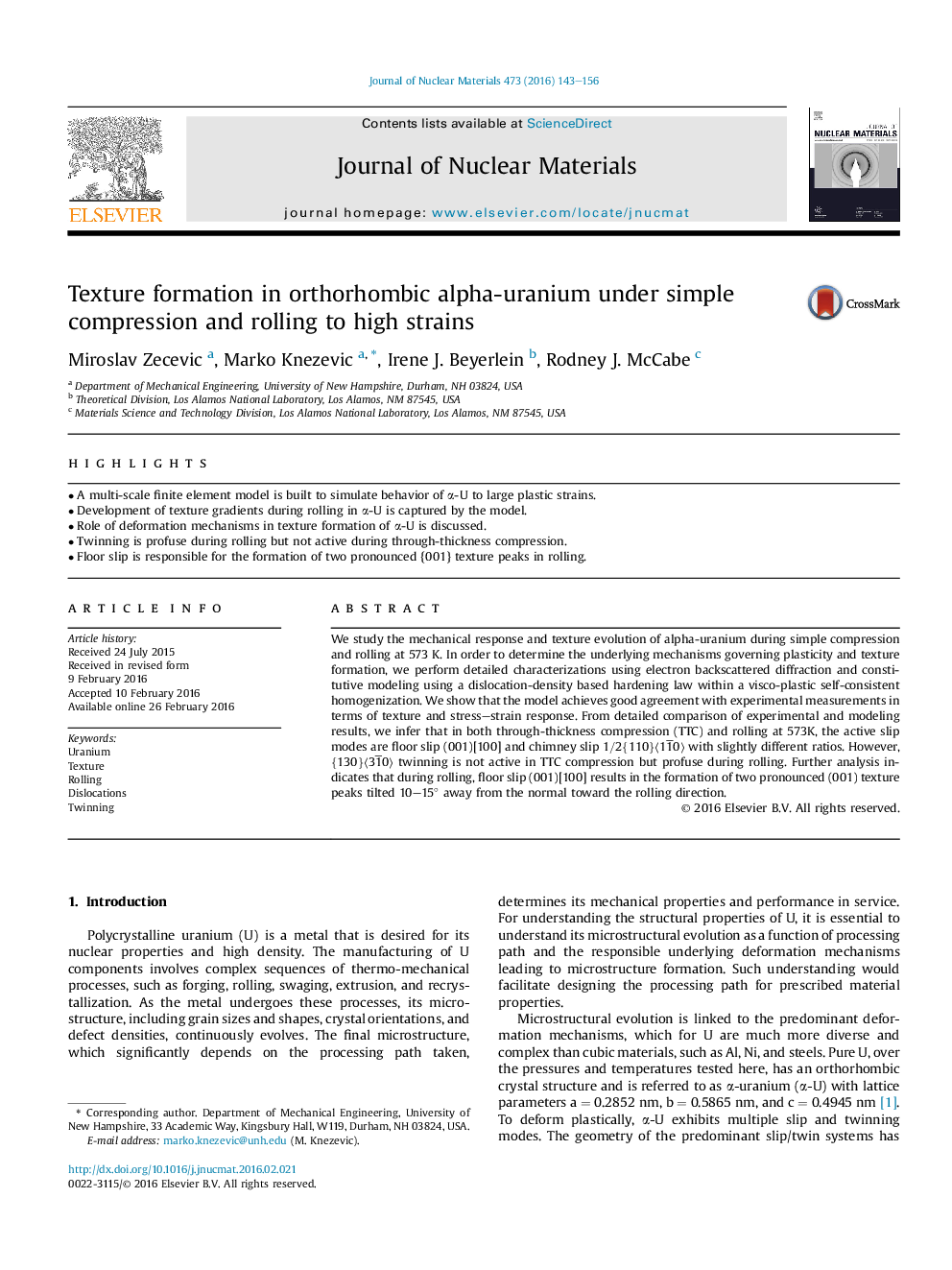| Article ID | Journal | Published Year | Pages | File Type |
|---|---|---|---|---|
| 7964433 | Journal of Nuclear Materials | 2016 | 14 Pages |
Abstract
We study the mechanical response and texture evolution of alpha-uranium during simple compression and rolling at 573 K. In order to determine the underlying mechanisms governing plasticity and texture formation, we perform detailed characterizations using electron backscattered diffraction and constitutive modeling using a dislocation-density based hardening law within a visco-plastic self-consistent homogenization. We show that the model achieves good agreement with experimental measurements in terms of texture and stress-strain response. From detailed comparison of experimental and modeling results, we infer that in both through-thickness compression (TTC) and rolling at 573K, the active slip modes are floor slip (001)[100] and chimney slip 1/2{110}ã11¯0ã with slightly different ratios. However, {130}ã31¯0ã twinning is not active in TTC compression but profuse during rolling. Further analysis indicates that during rolling, floor slip (001)[100] results in the formation of two pronounced (001) texture peaks tilted 10-15° away from the normal toward the rolling direction.
Related Topics
Physical Sciences and Engineering
Energy
Nuclear Energy and Engineering
Authors
Miroslav Zecevic, Marko Knezevic, Irene J. Beyerlein, Rodney J. McCabe,
